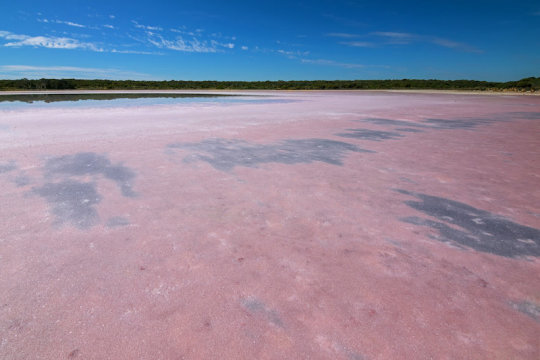[ad_1]
As bacteria adapt to hotter temperatures, they speed up their respiration rate and release more carbon, potentially accelerating climate change.
By releasing more carbon as global temperatures rise, bacteria and related organisms called archaea could increase climate warming at a faster rate than current models suggest. The new research, published today in Nature Communications by scientists from Imperial College London, could help inform more accurate models of future climate warming.
Bacteria and archaea, collectively known as prokaryotes, are present on every continent and make up around half of global biomass — the total weight of all organisms on Earth.
Most prokaryotes perform respiration that uses energy and releases carbon dioxide — just like we do when we breathe out. The amount of carbon dioxide released during a given time period depends on the prokaryote’s respiration rate, which can change in response to temperature.
However, the exact relationship between temperature, respiration rate and carbon output has been uncertain. Now, by bringing together a database of respiration rate changes according to temperature from 482 prokaryotes, researchers have found the majority will increase their carbon output in response to higher temperatures to a greater degree than previously thought.
Lead researcher Dr Samraat Pawar, from the Department of Life Sciences at Imperial, said: “In the short term, on a scale of days to hours, individual prokaryotes will increase their metabolism and produce more carbon dioxide. However, there is still a maximum temperature at which their metabolism becomes inefficient.
“In the longer term, over years, these prokaryote communities will evolve to be more efficient at higher temperatures, allowing them to further increase their metabolism and their carbon output.
“Rising temperatures therefore cause a ‘double whammy’ effect on many prokaryote communities, allowing them to function more efficiently in both the short and long term, and creating an even larger contribution to global carbon and resulting temperatures.”
The researchers compiled prokaryote responses to temperature changes from across the world and in all different conditions — from salty Antarctic lakes below 0°C to thermal pools above 120°C.
They found that prokaryotes that usually operate in a medium temperature range — below 45°C — show a strong response to changing temperature, increasing their respiration in both the short term (days to weeks) and long term (months to years).
Prokaryotes that operate in higher temperature ranges — above 45°C — did not show such a response, but since they operate at such high temperatures to begin with, they are unlikely to be impacted by climate change.
The short-term responses of medium-temperature prokaryotes to warming were larger than those reported for eukaryotes — organisms with more complex cells, including all plants, fungi and animals.
The team built a mathematical model that predicted how these respiration rate changes would affect the carbon output of prokaryote communities. This revealed that short- and long-term changes to respiration rate would combine to create a larger-than-expected rise in carbon output, which is currently unaccounted for in ecosystem and climate models.
Lead author of the new research, PhD student Thomas Smith from the Department of Life Sciences, said: “Most climate models assume that all organisms’ respiration rates respond to temperature in the same way, but our study shows that bacteria and archaea are likely to depart from the ‘global average’.
“Given that these micro-organisms are likely to be significant contributors to total respiration and carbon output in many ecosystems, it’s important for climate models to take into account their higher sensitivity to temperature change at both short and long timescales.
“Importantly for future climate predictions, we would also like to know how the numbers of prokaryotes, and their abundance within local ecosystems, might change with increasing temperatures.”
Story Source:
Materials provided by Imperial College London. Original written by Hayley Dunning. Note: Content may be edited for style and length.
[ad_2]















